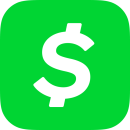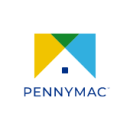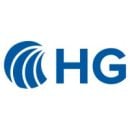Fleeting are the days of traditional management hierarchies. Instead, the complexity of progressive tech demands leadership from the greater whole.
So argues expert Joseph Raelin, whose mutual model of leadership decentralizes positional power and fosters a “leaderful practice” that permeates the organization. Raelin posits that this contemporary framework fulfills the needs of 21st century tech organization.
Companies gain the flexibility and speed needed to keep pace in a breakneck market by dispersing power throughout the larger group. In this alternative organizational approach, more team members are emboldened to take an active role in decision-making and implementation. Beyond enhancing the agility of the organization, non-positional leadership creates more space for nurturing the greater good.
Enter the individual contributor. “My team supports me in my goals as an individual contributor — including my passion for diversifying the tech industry and creating an equitable future for the Black community,” said Cash App Android engineer Adrian Devezin.
In addition to his technical contributions to the Cash App health engineering team — which aims to maximize user trust and access to Cash App’s ecosystems — Devezin provides leadership in ways that fall beyond the traditional bounds of his role. As a result, he is empowered to bring his personal passion to the table and enact more inclusive practices in his organization and community at large.
Similarly, Sarah Dasko, a staff engineer at HG Insights, feels encouraged to share her earned experience — and the confidence it’s afforded her — with those on her team.
“I have learned a lot about myself during this adventure. I love mentoring others and empowering them to act responsibly on their ideas,” Dasko said.
Built In sat down with individual contributors of the Angelino tech scene to learn more about how they elevate their companies through “leaderful practice” — and how individual contributors have the power to create waves of positive change that reach far beyond their respective organizations.

Cash App is a fintech company with a mission to redefine the world’s relationship with money by making it more relatable, instantly available and universally accessible.
Describe your role at your company.
I’m an Android engineer on the health team based in Atlanta, Georgia. Our team’s mission is to help maximize trust and expand user access to Cash App’s ecosystems. The thinking is: By creating a holistic customer experience, we will continue to foster the trust and security of our customers and their assets.
I am currently working to ensure all Cash App customers can continue to access our app in a secure and identified way.
How have you shown leadership in your current role?
Cash App has enabled me to bring a lot of my personal experiences and passions into my role. As part of Cash App’s inclusion and diversity work, I currently serve as a mentor for the “Next Chapter Project” to create a more equitable workplace for previously incarcerated people. I have also worked with Cash App engineers by inviting them to speak to local high school students through my nonprofit Empowr.
At Empowr, our mission is to teach software development to Black high school students and ensure that every student has the opportunity to land a six-figure career upon graduating high school. Since working with Cash App, Empowr has invited several of our engineers to speak with over a dozen students in Atlanta. Through these talks, we’ve been able to offer inspiration and knowledge of the tech industry to students who are interested in pursuing a career in the field.
Some of the engineers have even stayed on to mentor the students, meeting with them regularly, teaching soft skills, and helping them develop a plan to enter the tech industry.
I want to continue to support building a pipeline for diverse engineers in the tech industry.”
What do you see as a potential career path?
I want to continue to support building a pipeline for diverse engineers in the tech industry. Cash App has an inclusive culture, and I would love to continue to ensure more Black engineers can make Cash App their home.
Thankfully, Cash App’s culture is not only about inclusion, but also about support. I have a great team that supports me in my goals as an individual contributor — including my passion for diversifying the tech industry and creating an equitable future for the Black community through Empowr.
Pennymac is a fintech company that pairs diverse teams of mortgage professionals with engineers to provide innovative financial solutions and services.
Describe your role at your company.
I’m a UX (User Experience) designer here at Pennymac in the Application Development team. I solve complex problems and transform them into user-friendly applications for Pennymac employees and our customers.
Recently, I’ve been working with my wonderful team on an application that allows managers to look at loans from a high level and review all the activities in the pipeline. I’m currently working on a project that will give our team the ability to save filters on internal applications in order to help streamline the loan management process.
Pennymac has many great aspects that I love, but the one I value most is how the company makes sure every voice is heard and acknowledged.”
How have you shown leadership in your current role?
My team has always been very receptive to refining our processes, so when I saw an opportunity to ensure that initial design concepts matched the final output, they instantly embraced my suggestion and we were able to proceed with a new method. We initially met with our designers and developers, and together we took a deeper dive into the working story to ensure its clarity and flow. The project was really collaborative, and it provided me with an opportunity to demonstrate leadership in my current position.
I also took initiative by reaching out to our internal tech team and offering to redesign the bi-weekly newsletter. They were thrilled and provided me with the essential tools to get started. I am looking forward to assisting them in this effort while also contributing to Pennymac’s company culture.
Pennymac has many great aspects that I love, but the one I value most is how the company makes sure every voice is heard and acknowledged.
What do you see as a potential career path?
I truly enjoy mentoring and helping UX designers that are just starting their career. In the near future, I can see myself helping to lead a UI/UX team by guiding junior designers and helping them learn and grow as professionals.
I’m fortunate to have ongoing support from my manager, who is continually helping me get to the next level in my career path.
Verifi, a Visa company, is a fintech company that provides payment protection and management solutions for e-commerce merchants.
Describe your role at your company.
I am a QA technical lead responsible for test plan development, test methodologies and strategy improvement.
The most exciting project I am working on right now is migrating Verifi’s products and solutions to Visa’s data center. It is a complicated and demanding project involving infrastructure changes, code rewriting, and application lift and shift. I joined the migration team as a QA SME. It is exciting to work with very talented individuals from different teams to achieve a big goal.
How have you shown leadership in your current role?
Quality assurance is a crucial part of the migration journey. I developed test plans with my managers and helped QA team members to understand the procedures and expectations. To ensure testing accuracy and efficiency, I held product knowledge sharing sessions, tools training and work sessions for team members.
I always try my best to support team members by providing accurate information, helping them troubleshoot or guiding them to get support from proper resources. I believe empowering the team with knowledge, skills and prompt support is important for the team to achieve our goals.
Moving to the next level is not a sudden change.”
What do you see as a potential career path?
In the near future, I would like to be an expert in quality engineering to provide people guidance and lead a team that I am passionate about. My managers and mentors are great leaders, and I have learned a lot from them.
The important thing for me in getting to the next level is to take practical steps, including practicing skills like strategic thinking, effective communication and motivating team members. Moving to the next level is not a sudden change: Receiving feedback from managers and colleagues, continually learning and practicing what I learned will lead to self-improvement and to develop in the right direction.
HG Insights is a big data and information technology company that enables B2B tech-focused companies to improve their go-to-market with technology insights.
Describe your role at your company.
As a staff engineer at HG Insights, I use my five years of customer-related knowledge to help guide the engineering department — and company — in their goal to implement the next big thing.
I look at features we want to build and determine if they are feasible within our time constraints, the abilities of team members and so on. Then, I work with company stakeholders to help them understand the feature requests from a technical perspective. During these conversations, I may suggest altering the project to meet a deadline or accommodate technical limitations.
I use my experience to help other engineers by doing research, building proofs-of-concept or pair-programming to solve complex problems. My goal is to help complete projects as quickly as possible and share knowledge and experience.
Currently, I’m excited to work with various teams to define part of our core data set. This missing definition has been the root cause of many miscommunications between engineering, other departments and our customers. This work will empower engineering to make solid design decisions and virtually eliminate our existing communication issues.
Sometimes, these ideas don’t work out. However, it’s not a mark of failure; instead, it is a sign of learning.”
How have you shown leadership in your current role?
My team has been working on modernizing our customer-facing tech stack for the past 18 months. We based our efforts on customer use cases, existing code and a vision for improving our engineering. This foundation led us to build our first data warehouse. We also reevaluated our API technology and switched our framework based on a list of objective observations. We migrated from REST to GraphQL, making our endpoints query-able and easier to version.
As the lead over this project, I mentor other engineers — helping them overcome our products’ steep learning curve. I educate others on our new code and API paradigms. For example, I created a series of open office hour meetings, where I am available for pair programming, reviewing existing code samples and providing guidance on implementing features.
I have learned a lot about myself during this adventure. I love mentoring others and empowering them to act responsibly on their ideas. Sometimes, these ideas don’t work out. However, it’s not a mark of failure; instead, it is a sign of learning.
What do you see as a potential career path?
My time at HG Insights has been excellent. They’ve provided me with amazing mentors, the ability to mentor others, fun projects to work on and the freedom to become involved in as many aspects of the company as my heart desires.
HG is transitioning from a small startup, where individual contributors must fill multiple roles, to a larger company with dedicated positions. Now that we have more engineering resources available, I’m hoping to focus on long-term company goals and implement them in the short term. For example, we might need a new service to support a critical feature on our roadmap a year from now. Instead of waiting, I’d like to implement a basic version of the service now, giving us ample time to test it and make adjustments so we’re ready.
Working on scaled-back versions of our long-term goals will help us stay ahead of the workload and allow me to continue working with a large swath of people throughout the company. I believe this collaboration will help HG Insights improve our ability to create, support and achieve our company goals.













